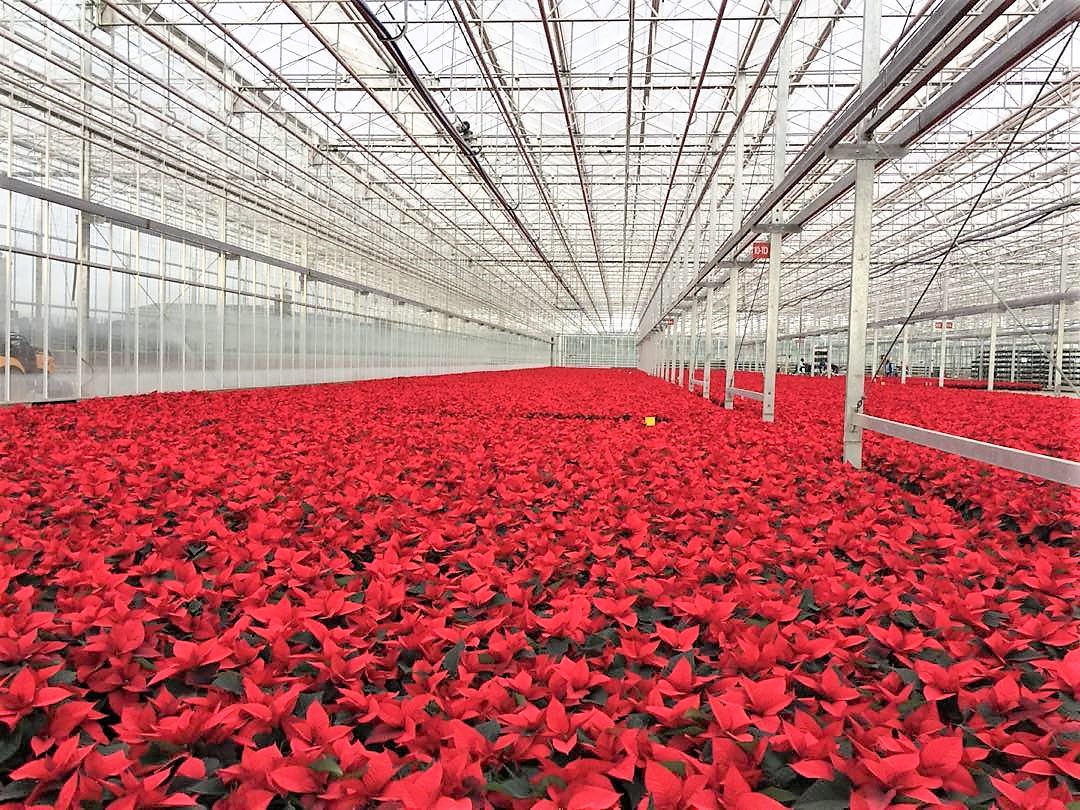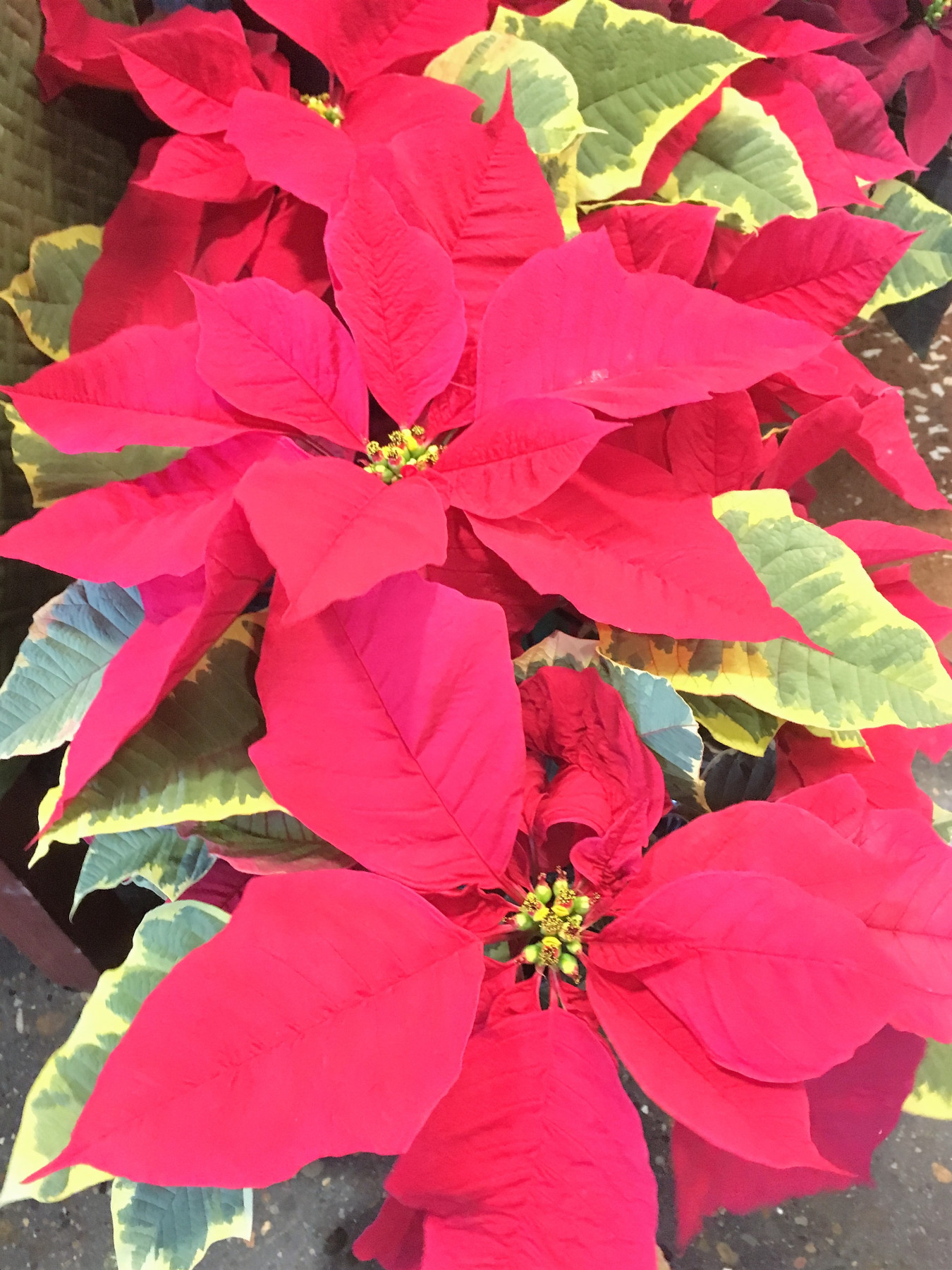
I confess—I’m a poinsettia composter. I tried growing them on after the holidays with my other houseplants, and the results were leggy and dismal. Now I’m talking with Kym Pokorny, a gardener, a 20-year veteran garden writer, and communications specialist at Oregon State University Extension Service. She’s always been interested in this iconic holiday plant. As a child, Kym remembers her father’s wholesale greenhouses. “I’d walk in there, and it was a sea of red,” Kym says. “It was magical.”
She also feels connected to poinsettias’ historical and ancient lineage. “I think the stories behind plants keep them alive because people take notice and help to preserve them.” For millennia, poinsettias were important to the original inhabitants of Central and South America. They’re named for Joel Poinsett, the first U.S. ambassador to Mexico, who brought the plants to North America in 1828.
Handsome tropical-looking leaves and a resilient disposition make poinsettia (Euphorbia pulcherrima) a natural in your greenhouse or sunny windowsill. Kym’s advice includes time for dormancy, and time spent in the dark to trigger the formation of red coloring on the bracts that surround the real flowers in the center.
Kym’s Care Calendar
Post holidays: Choose a growing spot with bright light and no drafts. Water regularly, but don’t allow standing water in the dish under the plant. Nourish with half-strength water-soluble balanced (3 numbers are similar) fertilizer every two weeks.
Post-holiday dormancy: When leaves begin to fall, stop feeding, and water only enough to keep stems from shriveling. Cut back to six inches.

Spring renewal: When new growth appears, water regularly and feed as before. Pinch growing stems for more bushier plants. Use gloves to protect from the white sap, which may irritate your skin. Poinsettia’s poisonous reputation is highly overrated. It’s described on poison control websites as mildly toxic in large quantities.
Summer light: You can move your plant outdoors (slowly acclimate to brighter light) or let it stay with your other houseplants. Continue care. Bring inside when frost threatens.
Autumn dark: A complete 14-hour blackout at night, and bright light in the day is the key. Eight weeks before the holidays, arrange for your plant to receive no light at night. You can move it to a closet, or place a box over it (no holes). Or, if no exterior light shines on your greenhouse at night, shut off all illumination inside. Figure out what works for you.
Winter décor: Coloration should start after a few weeks. Once fully hued, the plant will not be affected by light and can be moved into place for your celebrations.


